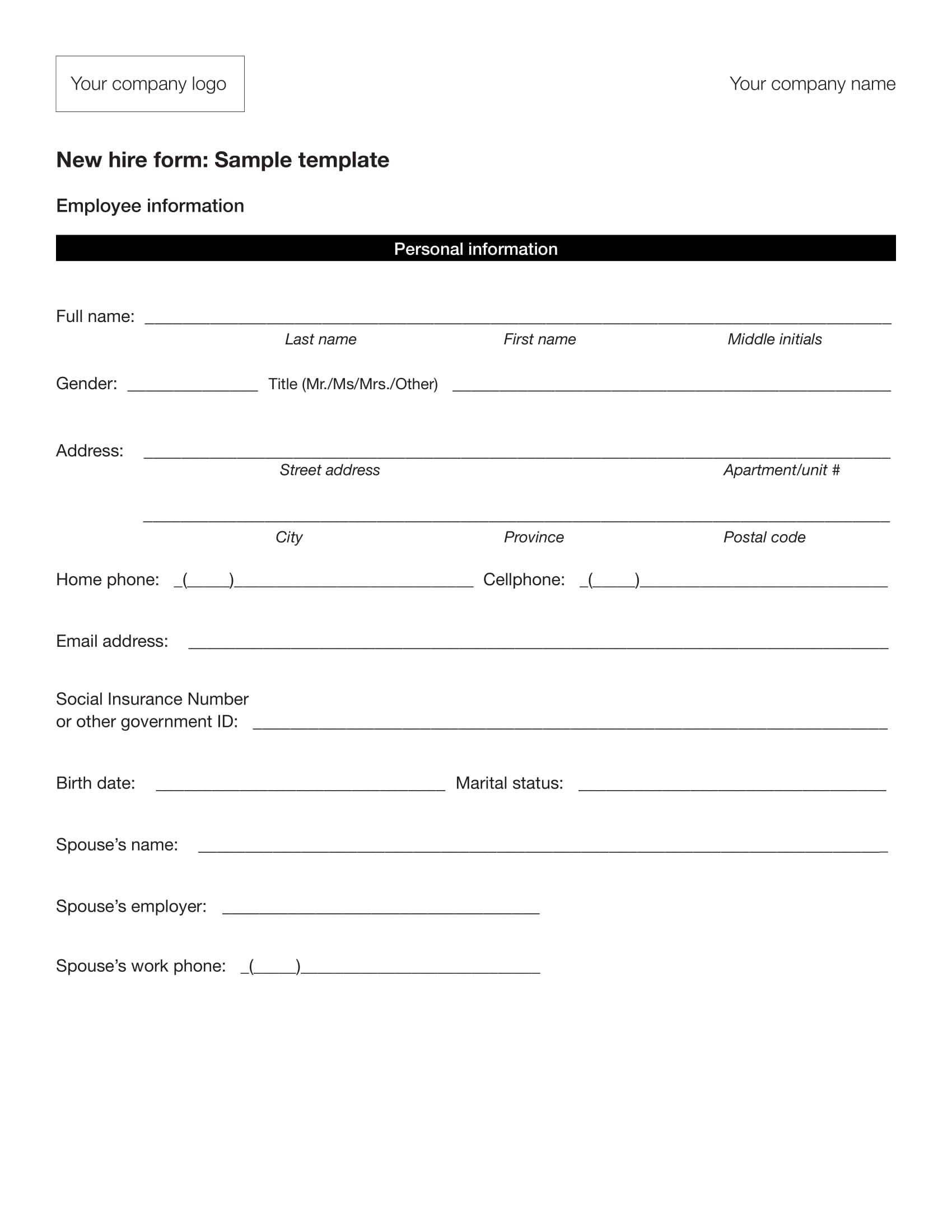Essential Paperwork Checklist for New Employees

Embarking on a new job is an exciting journey, filled with new opportunities and learning curves. Whether you're just stepping into your first job or transitioning to a new one, there's a common, yet critical phase that all new employees must navigate: completing the essential paperwork. This phase is crucial for setting up a seamless employment relationship, ensuring compliance with legal standards, and helping HR to get your benefits and payroll in place. Below is a detailed checklist designed to guide new hires through the paperwork maze with ease.
Pre-Employment Paperwork

Before you can officially join the ranks of any organization, there are several pre-employment documents you’ll need to complete:
- Application Form: Even if you've applied online or through a recruitment platform, a physical or electronic application form is often required for HR records.
- Resume and Cover Letter: Though these are generally submitted during the application process, you might be asked to provide updated versions.
- Offer Letter: Review and sign the offer letter, which outlines the terms of your employment, including salary, job title, start date, and conditions of employment.
- Educational Certificates: Copies of your educational qualifications or relevant certifications that align with the job description.
- Employment Verification Forms: Documentation or forms to verify past employment, which can be done through HR or directly from previous employers.
Notes:

📝 Note: Ensure all submitted documents are legible and in an acceptable format (PDF or original paper copies if requested).
Onboarding Paperwork

Upon acceptance of your offer, you’ll dive into onboarding, where you’ll encounter:
- W-4 Form: The IRS Form W-4 to indicate your tax withholding.
- I-9 Form: To verify your identity and eligibility to work in the U.S. Accompanied by acceptable forms of identification.
- Direct Deposit Authorization: Necessary for setting up payroll so that your salary is paid directly into your bank account.
- Benefits Enrollment: Forms to enroll in health insurance, retirement plans, and other company-sponsored benefits.
- Employee Handbook Acknowledgment: You'll need to acknowledge that you've received and understood the company's policies.
Notes:

📝 Note: Double-check the details on forms like the W-4 to ensure your tax withholdings are accurate. Incorrect details can affect your tax returns.
Orientation and Compliance

During orientation, expect the following paperwork:
- Confidentiality Agreement: To protect company secrets and sensitive information.
- Non-Compete or Non-Solicitation Agreements: These may restrict your ability to work for competitors or poach clients during and after employment.
- Company Policies and Procedures Manual: A comprehensive guide that might require you to sign-off on key policies like anti-discrimination, workplace safety, and internet usage.
- Work Eligibility (Right to Work): Documents proving your legal right to work in the country of employment.
- Safety and Training Certifications: If applicable, certifications necessary for your job role.
Payroll and Benefits

To facilitate your integration into the company’s payroll and benefits system:
- Time-off Request Form: Familiarize yourself with how to request leave or vacation time.
- Flexible Spending Account (FSA) Form: If your company offers an FSA, this form is for managing your pre-tax healthcare expenses.
- 401(k) or Retirement Plan Enrollment: Opt into the company's retirement savings plan, often with a matching contribution from the employer.
Notes:

📝 Note: Consider taking advantage of employer-matched retirement savings, as it’s essentially free money towards your future financial security.
Health and Safety Documentation

To ensure compliance with health and safety standards:
- Emergency Contact Information: Provide emergency contact details to be used in case of accidents or health issues at work.
- OSHA-Related Forms: If applicable to your workplace, you might need to fill out forms related to workplace safety protocols.
Wrapping Up

Completing your new job paperwork efficiently ensures a smooth transition into your new role. Here are some closing thoughts:
- Stay organized by keeping copies of all documents for your records.
- Ask HR if there are digital signatures or specific document management systems to utilize.
- Take time to read through policies and agreements thoroughly. Understanding them is essential to your employment contract.
- Make use of HR resources for any questions or clarifications you might need.
By ensuring you've completed all required paperwork, you pave the way for a professional, hassle-free start at your new workplace. It might seem like a bureaucratic labyrinth, but it's a foundational step in establishing your relationship with your employer, securing your benefits, and fulfilling legal obligations. Remember, HR is there to guide you through this process, so feel free to reach out whenever you need assistance.
What happens if I miss an essential document when starting a new job?

+
It’s important to submit all required documents to HR as soon as possible. Missing documents can delay your payroll setup, benefits enrollment, and in some cases, can even impact your legal right to work. If you miss a document, contact HR immediately to rectify the situation.
Can I keep copies of documents I submit to HR?

+
Yes, it’s wise to keep copies of everything you submit. This ensures you have a personal record of all documents and can help resolve any discrepancies that might arise later.
How long do I have to provide documents after accepting a job offer?

+
Typically, HR gives new employees a grace period, which can range from a few days to a couple of weeks. Check with your HR department for specific deadlines, as missing these can delay your start date or cause administrative issues.



